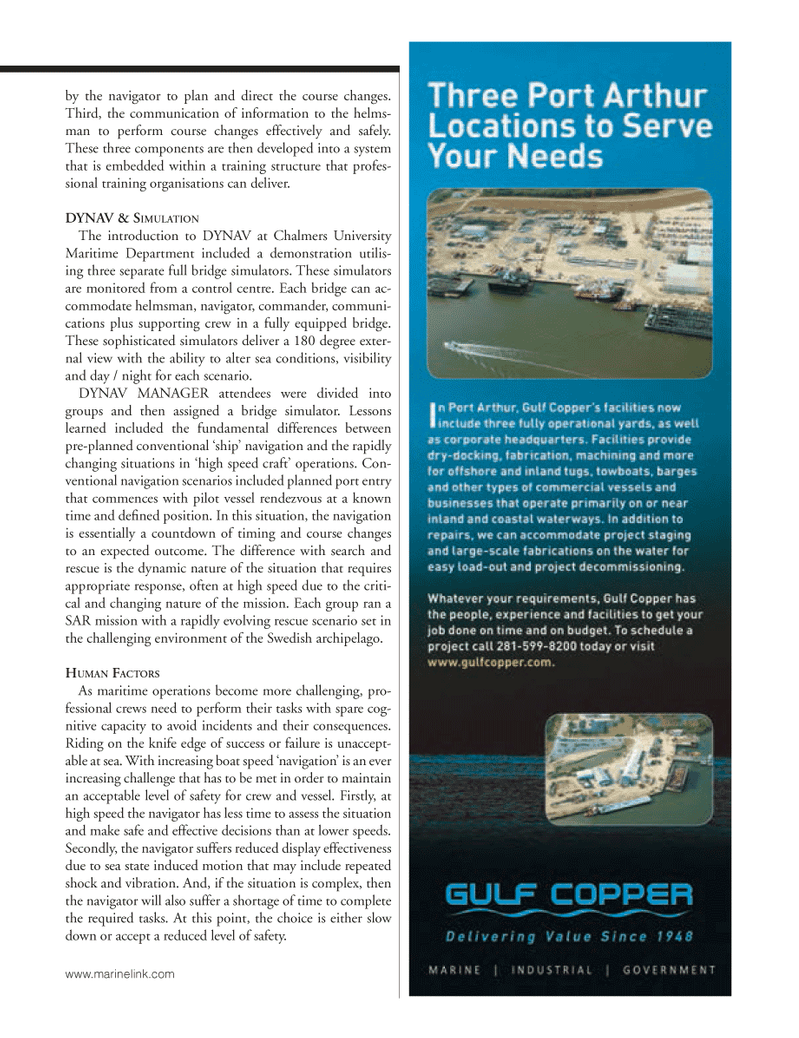
Page 23: of Marine News Magazine (December 2013)
Innovative Products & Boats of 2012
Read this page in Pdf, Flash or Html5 edition of December 2013 Marine News Magazine
by the navigator to plan and direct the course changes. Third, the communication of information to the helms- man to perform course changes effectively and safely. These three components are then developed into a system that is embedded within a training structure that profes- sional training organisations can deliver. DYNAV & S IMULATION The introduction to DYNAV at Chalmers University Maritime Department included a demonstration utilis- ing three separate full bridge simulators. These simulators are monitored from a control centre. Each bridge can ac- commodate helmsman, navigator, commander, communi- cations plus supporting crew in a fully equipped bridge. These sophisticated simulators deliver a 180 degree exter- nal view with the ability to alter sea conditions, visibility and day / night for each scenario. DYNAV MANAGER attendees were divided into groups and then assigned a bridge simulator. Lessons learned included the fundamental differences between pre-planned conventional ?ship? navigation and the rapidly changing situations in ?high speed craft? operations. Con- ventional navigation scenarios included planned port entry that commences with pilot vessel rendezvous at a known time and de ned position. In this situation, the navigation is essentially a countdown of timing and course changes to an expected outcome. The difference with search and rescue is the dynamic nature of the situation that requires appropriate response, often at high speed due to the criti- cal and changing nature of the mission. Each group ran a SAR mission with a rapidly evolving rescue scenario set in the challenging environment of the Swedish archipelago. HUMAN FACTORS As maritime operations become more challenging, pro- fessional crews need to perform their tasks with spare cog- nitive capacity to avoid incidents and their consequences. Riding on the knife edge of success or failure is unaccept- able at sea. With increasing boat speed ?navigation? is an ever increasing challenge that has to be met in order to maintain an acceptable level of safety for crew and vessel. Firstly, at high speed the navigator has less time to assess the situation and make safe and effective decisions than at lower speeds. Secondly, the navigator suffers reduced display effectiveness due to sea state induced motion that may include repeated shock and vibration. And, if the situation is complex, then the navigator will also suffer a shortage of time to complete the required tasks. At this point, the choice is either slow down or accept a reduced level of safety. www.marinelink.com MN Dec2013 Layout 18-31.indd 23MN Dec2013 Layout 18-31.indd 2311/25/2013 12:45:01 PM11/25/2013 12:45:01 PM

 22
22

 24
24
